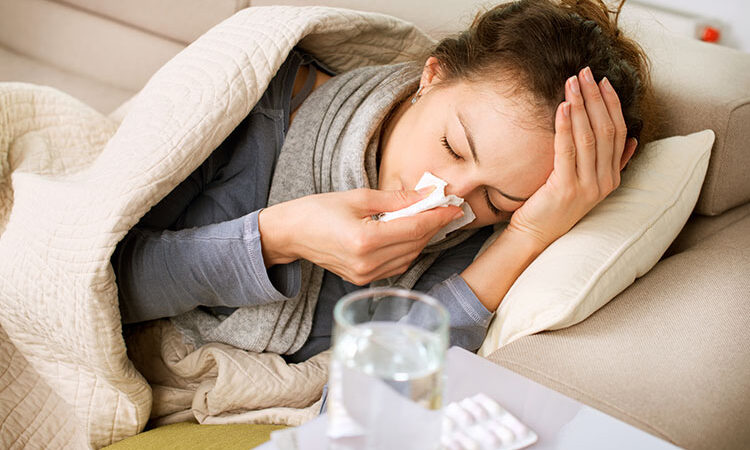Finally, here we are, well into the fall season, and we think we can speak for everyone when we say that 2020 has been a very long year. We are in the home stretch now, and as exciting as this is, unfortunately, along with the colorful fall foliage and festive pumpkins November also brings autumn’s much less welcome sidekick: cold & flu season.
Now, due to the current nationwide pandemic we are all very, very well practiced in the art of self and surface sanitation. But did you know there are measures you can take with your home’s indoor air quality that can help protect your family from viral invaders? Lucky for you, we have made a quick and easy-to-follow list of some key steps you can try to help cold & flu proof your home.
Change Your Air Filter
When your air filter is not replaced as often as it should be, it can get clogged by a buildup of the very same contaminants it was designed to prevent. The clog can create a barrier that inhibits airflow, creating major issues for your whole HVAC system. The health concerns begin when the poorly maintained and clogged filter is unable to trap those particles and contaminants and is thus forced to send them back into the air that your family breathes. The frequency at which you should change a filter depends on if you have pets or if someone in your home suffers from allergies or asthma. On average most manufacturers recommend basic filters be changed every 30 to 90 days and 4″ media filters are recommended to be changed every 6 months to 1 year.
Humidify Your Home
We’ve all felt it, that tickle in your throat that won’t go away, the stuffy nose you have every morning when you wake up, or the occasional zap when you touch a light switch or door knob. The funny thing about winter’s dry, leech-like air, is that it will pull moisture from just about anything, and that includes you. After it has absorbed the moisture produced by your body, dry skin isn’t the only thing it leaves you vulnerable to. Dry air aggravates respiratory issues, dries out your nasal passages and makes you more susceptible to catching colds and viruses. To combat this conundrum, consider investing in a whole-home humidifier. A humidifier will work in conjunction with your home’s heating system to not only make your indoor air feel warmer but to also deliver the right amount of moisture into your air stream to keep you and your family healthier all season long.
Ideal indoor humidity ranges from 35-50% and can be measured with the use of a hygrometer.
Purify Your Air
Modern air purifiers are capable of purging up to 99% of airborne pollutants and particles. I think we can all agree those numbers are impressive, but how do they work? The iWave air purification system works together with your HVAC system to clean and purify your indoor air as it passes through your home’s ductwork. Allergens and contaminants such as dust, dirt, pet dander, pollen and other particles in the micron size range are captured by your home’s air filtration system. While viruses, bacteria and other airborne and surface contaminants such as staph, MRSA, strep, e-coli and SARS-CoV-2 (Covid-19) are inactivated with reduction rate of up to 99.4%1.
As we all know very well at this point: flu season and viruses are no joke. Take these steps to provide your home with the best possible indoor air quality. It will give you and your family peace of mind, not to mention it could quite literally help you breathe easier all season long.
1 The iWave family of products have been proven through independent lab testing to significantly reduce a wide variety of pathogens in the breathing zone and on hard non-porous surfaces. The SARS-CoV-2 test was run using the iWave-C (GPS-DM48-AC) in a test designed to mimic ionization conditions like that of a commercial aircraft’s fuselage. Based on viral titrations, it was determined that at 10 minutes, 84.2% of the virus was inactivated. At 15 minutes, 92.6% of the virus was inactivated, and at 30 minutes, 99.4% of the virus was inactivated.

